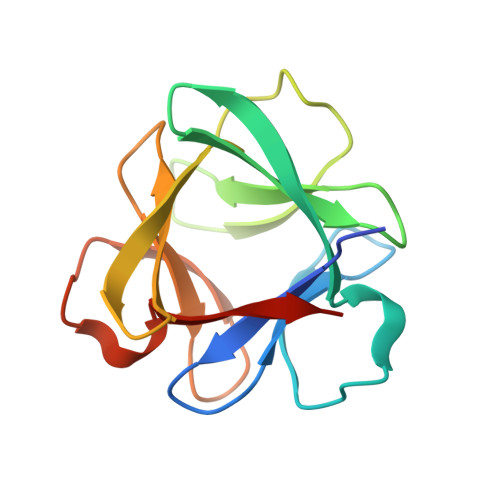A single aromatic core mutation converts a designed "primitive" protein from halophile to mesophile folding.
Longo, L.M., Tenorio, C.A., Kumru, O.S., Middaugh, C.R., Blaber, M.(2015) Protein Sci 24: 27-37
- PubMed: 25297559
- DOI: https://doi.org/10.1002/pro.2580
- Primary Citation of Related Structures:
4QKR, 4QKS - PubMed Abstract:
The halophile environment has a number of compelling aspects with regard to the origin of structured polypeptides (i.e., proteogenesis) and, instead of a curious niche that living systems adapted into, the halophile environment is emerging as a candidate "cradle" for proteogenesis. In this viewpoint, a subsequent halophile-to-mesophile transition was a key step in early evolution. Several lines of evidence indicate that aromatic amino acids were a late addition to the codon table and not part of the original "prebiotic" set comprising the earliest polypeptides. We test the hypothesis that the availability of aromatic amino acids could facilitate a halophile-to-mesophile transition by hydrophobic core-packing enhancement. The effects of aromatic amino acid substitutions were evaluated in the core of a "primitive" designed protein enriched for the 10 prebiotic amino acids (A,D,E,G,I,L,P,S,T,V)-having an exclusively prebiotic core and requiring halophilic conditions for folding. The results indicate that a single aromatic amino acid substitution is capable of eliminating the requirement of halophile conditions for folding of a "primitive" polypeptide. Thus, the availability of aromatic amino acids could have facilitated a critical halophile-to-mesophile protein folding adaptation-identifying a selective advantage for the incorporation of aromatic amino acids into the codon table.
- Department of Biomedical Sciences, Florida State University, Tallahassee, Florida, 32306-4300.
Organizational Affiliation:

















